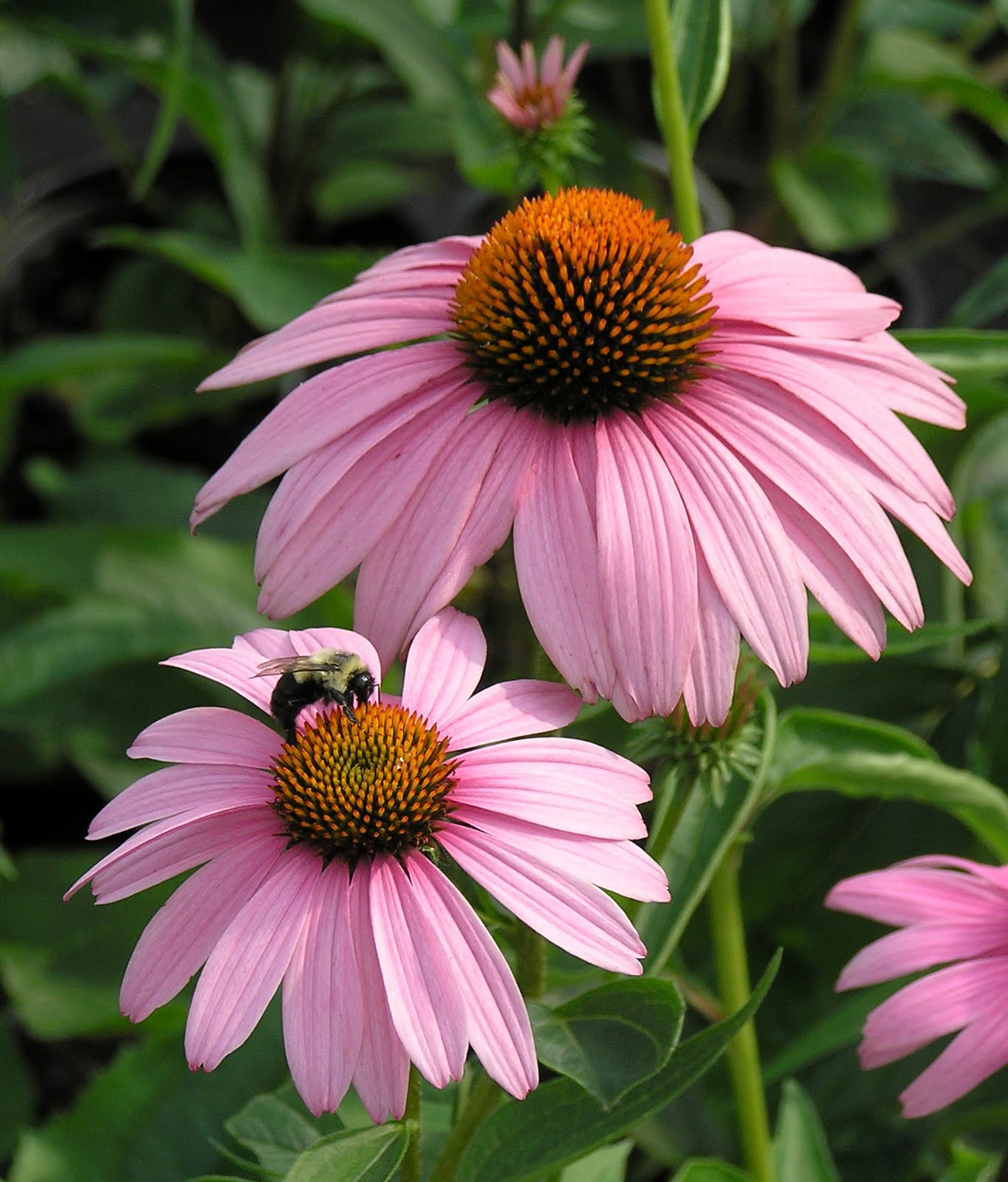Perennials Vs. Annuals: Making The Best Choice For Your Flowerbeds

Table of Contents
Understanding Perennials
What are Perennials?
Perennial plants are the steadfast champions of the garden world. Unlike their annual counterparts, perennials live for more than two years, returning year after year to grace your flowerbeds with their beauty. Popular perennial plants include coneflowers (Echinacea), hostas, lavender, daylilies, and many more. Their longevity makes them a rewarding investment for any gardener.
- Return year after year: Enjoy continuous blooms and garden structure without the annual replanting hassle.
- Often require less maintenance once established: After the first year, perennials generally need less attention than annuals.
- Can be divided to propagate: Easily expand your garden by dividing established perennials and transplanting them to new areas.
- Offer long-term beauty and value: Perennials provide lasting visual interest and save you money in the long run.
Pros and Cons of Perennials
Pros:
- Long-lasting: Enjoy years of blooms from a single planting.
- Cost-effective in the long run: Although the initial investment might be higher, perennials save you money over time compared to constantly replacing annuals.
- Provide structure and visual interest throughout the seasons: Many perennials offer interesting foliage even when not in bloom, providing year-round interest in your garden.
- Attract pollinators: Many perennials are attractive to bees, butterflies, and other beneficial insects, contributing to a healthy garden ecosystem.
Cons:
- Slower initial growth: Perennials may take a year or two to fully establish and reach their mature size and blooming potential.
- May require more attention in the first year to establish: Young perennials need proper watering, fertilization, and weed control to thrive.
- Can be susceptible to disease or pests: Just like any plant, perennials can be vulnerable to certain diseases and pests.
- May not bloom continuously throughout the growing season: While some perennials offer prolonged bloom times, many have peak blooming periods followed by a rest.
Choosing the Right Perennials for Your Garden
Selecting the right perennials for your garden requires careful consideration of several factors:
-
Sun exposure: Choose plants that thrive in the amount of sunlight your garden receives.
-
Soil type: Match plants to the pH and drainage capabilities of your soil.
-
Hardiness zone: Select perennials suitable for your USDA hardiness zone to ensure they survive the winter.
-
Desired bloom time and color: Plan your planting to ensure continuous blooms throughout the growing season with a variety of colors.
-
Research local nurseries for suitable varieties: Consult with local experts to find perennials that perform well in your specific climate and soil conditions.
-
Group perennials based on their needs: Plant perennials with similar sun, water, and soil requirements together.
-
Plan for succession planting for continuous blooms: Choose a mix of perennials with staggered bloom times to keep your garden vibrant throughout the season.
Understanding Annuals
What are Annuals?
Annual plants complete their entire life cycle – from seed to flower to seed again – within a single growing season. Popular annuals include zinnias, petunias, sunflowers, marigolds, and impatiens. They offer a quick and vibrant way to add color and excitement to your flowerbeds.
- Complete their life cycle in one year: These plants germinate, flower, set seed, and die within a single growing season.
- Provide a burst of color: Annuals are perfect for adding intense color and visual impact to your garden quickly.
- Offer a wide variety of colors and shapes: Annuals come in a vast array of colors, sizes, and flower forms, offering endless design possibilities.
- Easy to plant and grow: Annuals are generally easy to cultivate, making them ideal for beginner gardeners.
Pros and Cons of Annuals
Pros:
- Fast-growing: Annuals quickly fill in gaps and provide instant color.
- Instant color and impact: Annuals deliver immediate visual gratification.
- Wide variety of choices: The sheer variety of annuals allows for creative and flexible garden design.
- Easy to replace or replant: You can easily swap out annuals for different colors or varieties throughout the season.
Cons:
- Require more frequent planting: Annuals must be replanted each year.
- Higher cost over time: The constant need for replacement can make annuals more expensive in the long run than perennials.
- More maintenance (watering, fertilizing): Annuals often require more frequent watering and fertilizing to maintain their vibrancy.
- Less environmentally friendly (often more packaging and waste): The large volume of annual plant purchases often results in more packaging and plant waste.
Using Annuals to Enhance Your Garden Design
Annuals are incredibly versatile and can be used to dramatically enhance your garden's aesthetic appeal:
- Use them as fillers in mixed borders: Annuals can fill gaps between perennials, creating a fuller, more vibrant display.
- Create stunning container gardens: Annuals are perfect for containers, allowing for easy color changes and seasonal displays.
- Strategically place them for seasonal color changes: Plan your annual plantings to create a dynamic display that evolves throughout the growing season.
Perennials vs. Annuals: The Ultimate Comparison Chart
| Feature | Perennials | Annuals |
|---|---|---|
| Lifespan | More than two years | One growing season |
| Cost | Higher initial cost, lower long-term cost | Lower initial cost, higher long-term cost |
| Maintenance | Lower once established | Higher |
| Bloom Time | Varies, often shorter peak bloom periods | Varies, often continuous for the season |
| Environmental Impact | Generally more sustainable | Often less sustainable due to frequent planting |
Combining Perennials and Annuals for Optimal Results
The most stunning and low-maintenance gardens often utilize a combination of both perennials and annuals. Perennials provide the foundation, offering structure and long-term interest, while annuals add pops of vibrant color and seasonal flair.
- Plan your garden layout carefully: Consider sun exposure, soil type, and plant sizes when arranging both perennials and annuals.
- Select plants with compatible needs: Group plants with similar watering and sunlight requirements together.
- Enjoy the best of both worlds!: Experience the long-term beauty of perennials combined with the vibrant splashes of color provided by annuals.
Conclusion
The choice between perennials and annuals depends entirely on your gardening goals, available time, and budget. Perennials offer long-term beauty and less frequent planting, while annuals provide instant color and flexibility. By understanding the unique characteristics of each, you can create a stunning and thriving flowerbed that brings joy for years to come. Start planning your dream garden today by carefully considering the pros and cons of perennials vs. annuals for your flowerbeds!

Featured Posts
-
 Jonathan Tah Completes Bayern Munich Transfer
May 29, 2025
Jonathan Tah Completes Bayern Munich Transfer
May 29, 2025 -
 Mikel And Babayaro Chelsea Legends Face Liverpool In Charity Match
May 29, 2025
Mikel And Babayaro Chelsea Legends Face Liverpool In Charity Match
May 29, 2025 -
 Grupo Frontera And The Donald Trump Controversy Addressing The Backlash
May 29, 2025
Grupo Frontera And The Donald Trump Controversy Addressing The Backlash
May 29, 2025 -
 Aj Odudu Responds To Mickey Rourkes Inappropriate Comment On Celebrity Big Brother
May 29, 2025
Aj Odudu Responds To Mickey Rourkes Inappropriate Comment On Celebrity Big Brother
May 29, 2025 -
 Which Celestial Guardians Card Is Considered The Worst
May 29, 2025
Which Celestial Guardians Card Is Considered The Worst
May 29, 2025
